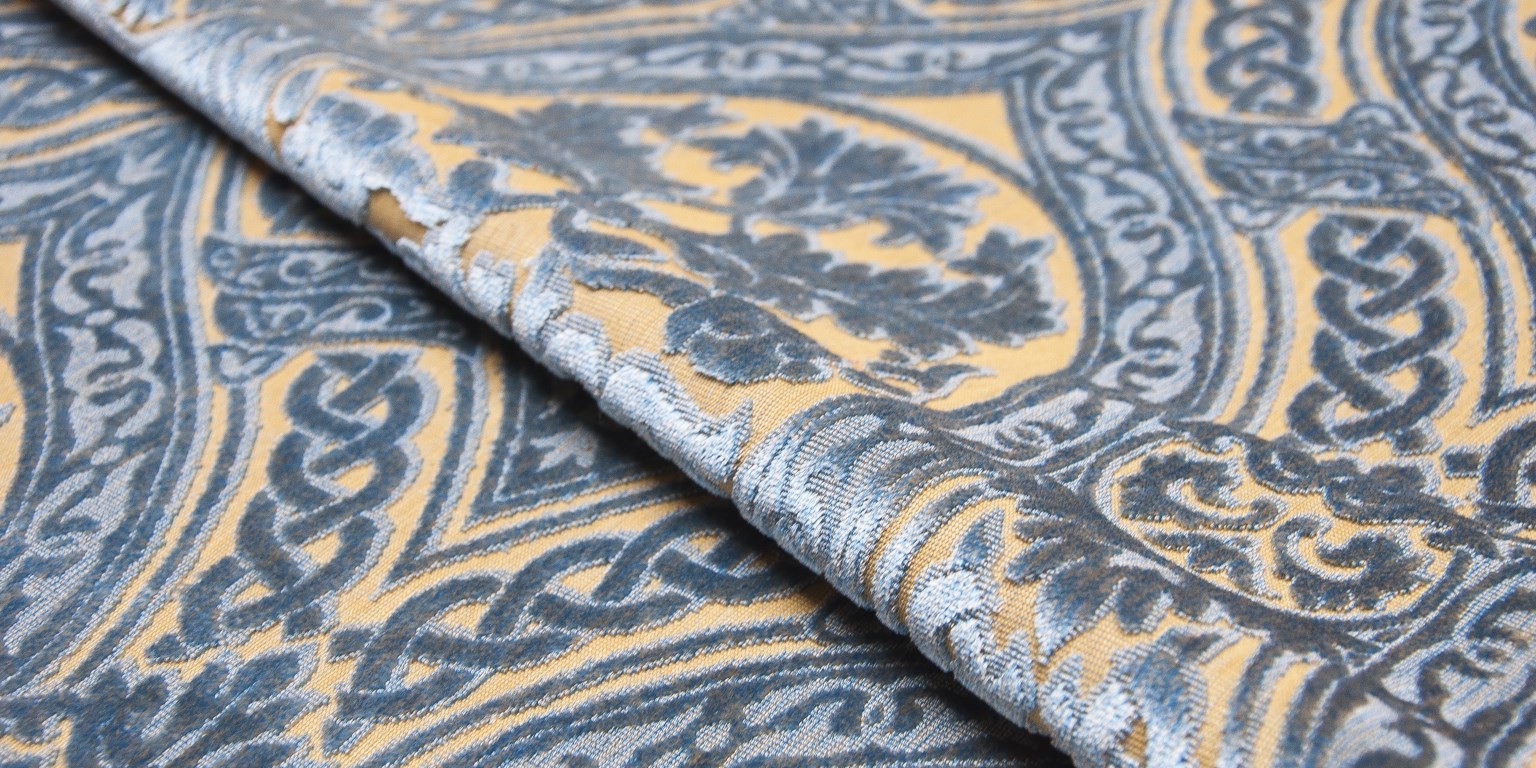In Venice, the unique soprarizzo velvet comes to life from 18th-century looms
A family business whose story is woven in the fabric of Venice’s rich artistic history, the Bevilacqua’s presence in the textile world dates back to 1499. Indeed, in that year Giovanni Mansueti painted ‘The capture of St. Mark in the synagogue,’ mentioning the names of the noblemen who commissioned it: one of them was a certain “Giacomo Bevilacqua, weaver.” Founded in 1875 by Luigi Bevilacqua, today the family business and tradition are carried on by brothers Rodolfo and Alberto Bevilacqua. The company, Tessitura Luigi Bevilacqua, specializes in velvet textiles and damask Renaissance designs. It preserves the ancient Venetian textile art to create unique fabrics, with individual details and color gradients, that infuse historical designs with a hint of modernity.
Founded in 1875 by Luigi Bevilacqua, today the family business and tradition are carried on by brothers Rodolfo and Alberto Bevilacqua
Tessitura Luigi Bevilacqua is one of the most ancient European weaving mills. Since the age of the Doges, using the same techniques and materials, expert hands transform precious natural yarns into the finest and most elegant fabrics. These have furnished palaces, homes, and theatres all over the world.
Among them, the most complex type of velvet, ‘soprarizzo’, owes its name to the fact it’s made up of 2 different velvets. The only Italian manufacturer of soprarizzo velvet, Bevilacqua jealously preserves a rich historic archive of nearly 3.500 patterns. Each year some traditional models are reproduced with new and more modern color combinations. This delicate job is carried out on original 18th-century looms and machines. They are the same ones that Luigi Bevilacqua recovered in 1875 from the old Silk Guild of the Republic of Venice.
Today it is possible to visit Tessitura Luigi Bevilacqua to see the six weavers and eighteen looms at work, while they produce the refined soprarizzo velvet. Visitors have the unique opportunity to touch fabrics made following ancient techniques which require 1-2 months to set up and then an entire day to weave 35-40 cm of fabric.
Ilona Catani Scarlett

